Nestled in Egypt’s vast Western Desert, near the Libyan border, Siwa Oasis is a hidden gem that offers a magical mixture of natural beauty, rich history, and authentic Egyptian culture. Unlike the more popular tourist spots like Cairo, Alexandria, or the Red Sea resorts, Siwa Oasis has managed to preserve its traditional way of life, making it an alluring destination for travelers seeking peace, adventure, and a taste of Egypt’s ancient past.
Siwa’s isolation has made it one of the country’s most exceptional and unspoiled locations. Surrounded by an endless expanse of dunes and salt lakes, the oasis is home to lush date palm groves, crystal-clear natural springs, and ruins of ancient civilizations. The local Siwans, predominantly Berber in origin, speak a language distinct from Arabic and live in harmony with their atmosphere, keeping traditions passed down for centuries.
Whether you’re an adventurer, a history enthusiast, or someone simply searching for tranquility, Siwa Oasis offers an unforgettable experience. Here are must-do activities to maximize your trip to this captivating desert paradise.
Table of Contents
Toggle1. Explore the Ancient Ruins of the Temple of the Oracle
The Temple of the Oracle, also recognized as the Temple of Amun, is one of Siwa’s most famous historical landmarks. Dating back to the 6th century BC, this temple is steeped in legend. The ancient oracle once provided divine counsel to kings and travelers, most famously to Alexander the Great, who sought its blessing before continuing his conquest.
Though weathered by time, the ruins still evoke a sense of mystery. As you wander through the remnants of the temple, it’s easy to imagine the grandeur of ancient ceremonies and the importance of this spiritual site. The elevated position of the temple also offers scenic views over the oasis, giving you a sense of Siwa’s desert-bound isolation.
2. Bathe in Cleopatra’s Spring
Also known as “Ain Juba,” Cleopatra’s Spring is a natural hot spring, one of the many bubbling pools that dot the Siwa landscape. According to local legend, Cleopatra herself once bathed in this spring during a visit to the oasis, though historical evidence of this is scarce.
Nonetheless, Cleopatra’s Spring remains a popular spot for both locals and tourists looking for a refreshing dip in the middle of the desert. The crystal-clear, warm waters are incredibly inviting, especially after a long day of exploring the desert. It’s a perfect way to chill and recharge.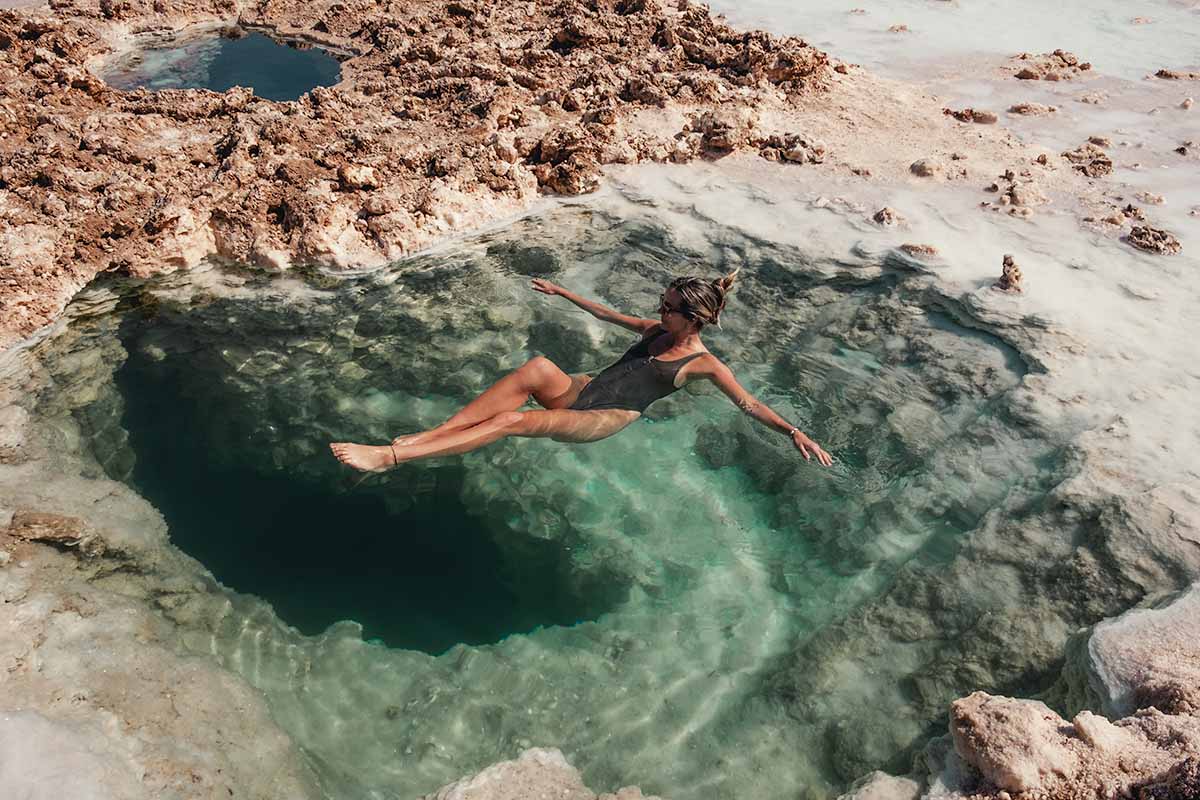
3. Visit Shali Fortress
At the heart of Siwa town lies the ancient fortress of Shali, an imposing structure made from karshef, a mixture of salt, mud, and clay. Built-in the 13th century, Shali was once a thriving stronghold designed to protect the Siwans from invading Bedouins. Its labyrinthine alleyways and towering walls still stand, offering a glimpse into Siwa’s medieval past.
Climbing to the top of Shali Fortress provides a panoramic view of the oasis, with its sea of palm trees, salt lakes, and desert dunes stretching into the horizon. The fortress is a photographer’s dream, especially when illuminated at sunset.
4. Float in Siwa’s Salt Lakes
Siwa’s salt lakes are a surreal and unforgettable experience. The high salt concentration in these lakes allows you to float effortlessly, much like in the Dead Sea. The clear, aquamarine waters are surrounded by stark white salt deposits, creating a mesmerizing contrast with the sandy landscape.
Another draw is the therapeutic properties of these salt lakes. The saline waters are said to assist with skin conditions and provide a detoxifying effect. Whether floating lazily or enjoying the striking scenery, visiting the salt lakes is a must-do in Siwa.
5. Take a Desert Safari to the Great Sand Sea
Every trip to Siwa Oasis is complete with a thrilling desert safari. Siwa is located on the edge of the Great Sand Sea, a vast expanse of golden dunes that stretch as far as the eye can see. A desert safari typically involves 4×4 vehicles that zoom up and down the dunes, providing an adrenaline-pumping ride through the desert.
The safari usually includes stops at crucial desert sites, such as Bir Wahed, a natural hot spring nestled in the dunes, and fossil fields where ancient marine fossils from when this area was once submerged under the sea can be found. You’ll also be able to try sandboarding, a fun and exciting way to glide down the desert slopes.
6. Stargaze in the Desert
The remote location of Siwa means it is far removed from the light pollution of Egypt’s major cities, making it one of the best places in the country for stargazing. After a day of exploring, spend an evening in the desert, where you can lay back and marvel at the dazzling array of stars that light up the night sky.
Many desert safaris include overnight camping, where you can enjoy a traditional Bedouin meal, drink sweet tea by the campfire, and then lie on a mattress under the stars. The silence and solitude of the desert, combined with the sheer brilliance of the Milky Way above, make for an awe-inspiring experience.
7. Explore the Mountain of the Dead (Gebel al-Mawta)
Siwa is home to many historical sites, and Gebel al-Mawta, or the Mountain of the Dead, is one of the most fascinating. This small hill on the outskirts of Siwa town is dotted with rock-cut tombs dating back to the Ptolemaic and Roman periods.
The tombs are decorated with ancient murals and hieroglyphs, giving visitors a glimpse into the burial customs of ancient civilizations. Some of the most famous tombs include the Tomb of Si-Amun, with its intricate depictions of gods and pharaohs, and the Tomb of Mesu-Isis, showcasing colorful paintings that have survived for over two millennia.
8. Enjoy a Siwan Feast
Siwa’s culinary offerings are a delightful mix of Egyptian and Berber influences. Many dishes are ready using local ingredients such as dates, olives, and seasonal vegetables. A typical Siwan meal might include “tagine,“ a slow-cooked stew of meat and vegetables, or “fire,“ a type of flatbread often stuffed with cheese or honey.
You can enjoy a traditional Siwan feast at one of the many family-run restaurants in town or join a local family for a home-cooked meal. Siwan hospitality is renowned, and sharing a meal with locals is an excellent way to immerse yourself in the oasis’s culture and traditions.
9. Discover the Dakrour Mountain Healing Sands
Siwa is known for its natural healing practices, and Dakrour Mountain is the center of these age-old traditions. For centuries, people have come to Siwa to experience its healing sands, which are believed to have therapeutic properties, particularly for those suffering from rheumatism and arthritis.
During the summer months, locals and visitors participate in “sand bathing,“ where they are buried up to their necks in hot sand for short periods. This ancient practice is said to relieve joint pain and improve circulation. While the experience may only be for some, it’s a unique way to participate with Siwa’s local culture and healing traditions.
10. Shop for Handicrafts at Siwa’s Souks
Siwa is famous for its handmade crafts, particularly textiles and jewelry, which make for exceptional souvenirs and gifts. The local souks (markets) offer various beautifully embroidered garments, woven baskets, and traditional Siwan silver jewelry.
One of the most notable items you can purchase is the “Siwan bridal dress,“ a beautifully decorated garment that Siwan brides traditionally wear. Handcrafted items here are often made from natural, locally sourced materials like palm leaves and salt crystals. Buying these crafts supports the local economy and helps preserve traditional Siwan artistry.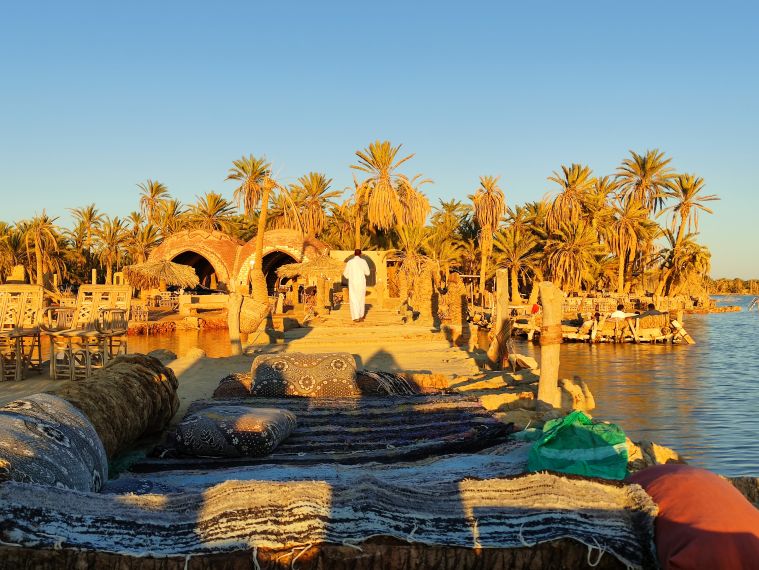
11. Attend a Local Festival
Siwa is home to several lively festivals, which offer visitors a unique opportunity to experience local culture firsthand. One of the most famous is the Siwa Date Harvest Festival, held in October during palm harvest. The festival celebrates the abundance of Siwa’s date palms with traditional music, dance, and feasting.
Another significant festival is the Siyaha Festival, a three-day celebration of peace and reconciliation at the foot of Dakrour Mountain. This festival, typically in October, brings together Siwans to resolve disputes and strengthen community bonds. As a guest, attending one of these festivals is an excellent way to immerse yourself in Siwa’s cultural heritage.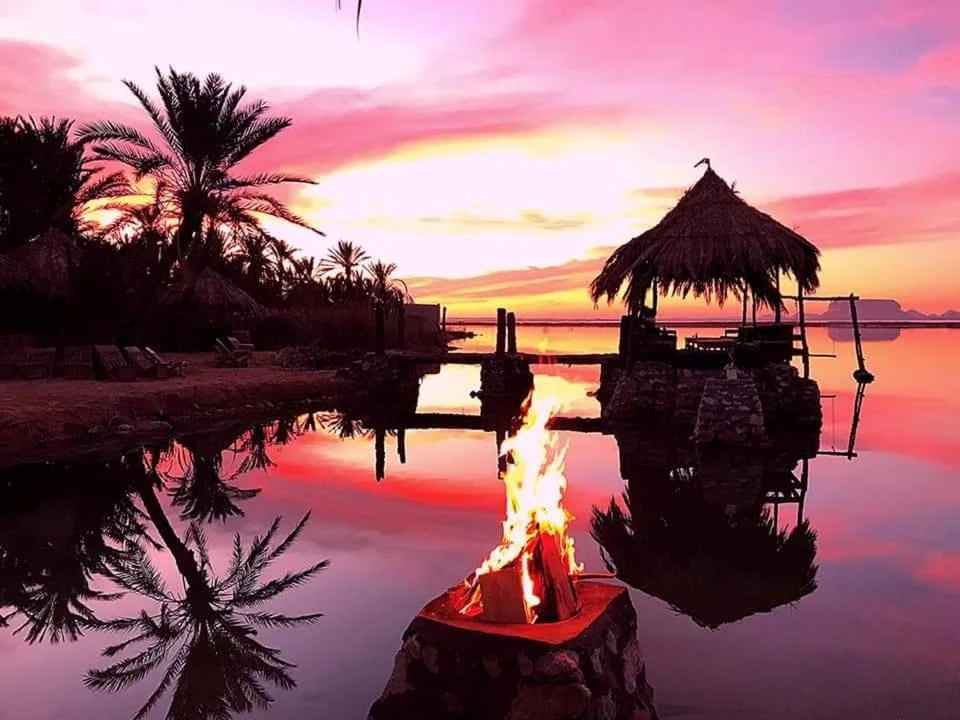
12. Shop for Authentic Siwan Handicrafts
Siwa’s local markets offer an array of beautifully handcrafted items that make unique souvenirs. Traditional Siwan silver jewelry, intricately woven baskets, embroidered textiles, and hand-painted pottery are just some of the items at the local souks.
Many of these crafts are made using materials sourced from the oasis, such as palm leaves and salt crystals. Purchasing these items not only supports local artisans but also helps preserve the oasis’s rich cultural traditions. Don’t forget to haggle, it’s all part of the experience!
13. Visit the Temple of Umm Ubayd
Often overshadowed by the more famous Temple of the Oracle, the Temple of Umm Ubayd is another fascinating historical site in Siwa, offering a quieter, more reflective experience. This lesser-known temple was once connected to the Oracle complex by a ceremonial road and was devoted to Amun, the ancient Egyptian god of the sun and air.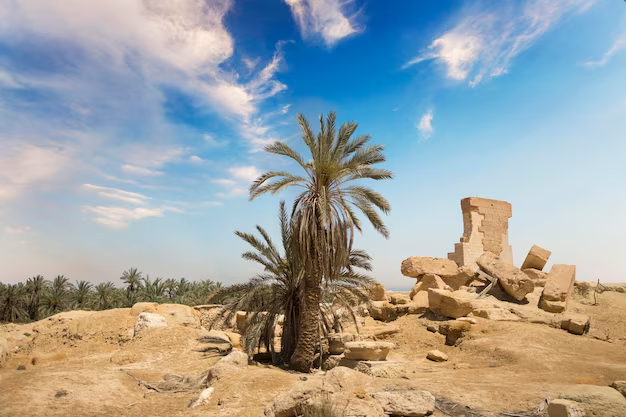
Although much of the temple has been reduced to rubble over the centuries, its remaining structures still convey a sense of grandeur. Visiting the site allows you to explore a lesser-visited corner of Siwa’s rich archaeological heritage, allowing for serene reflection amid the desert landscape. It’s a great stop for those interested in ancient history or those looking to avoid the more crowded tourist spots.
14. Explore Siwa’s Palm Groves and Gardens by Bicycle
Siwa’s lush palm groves are a defining feature of the oasis, and one of the best ways to explore them is by bicycle. Renting a bike is easy in Siwa town, and it allows you to slowly pedal through the peaceful, shady pathways lined with date palms, olive trees, and small agricultural plots.
Cycling through the groves offers an intimate view of local life, where you can spot farmers tending to their crops, children playing, and donkeys transporting goods along the quiet dirt roads. It’s also a wonderful way to cool down in the shade after a hot day of desert exploration. A leisurely bike ride through the groves can lead you to unexpected gems, like small, hidden springs, local homes, or other off-the-beaten-path ruins.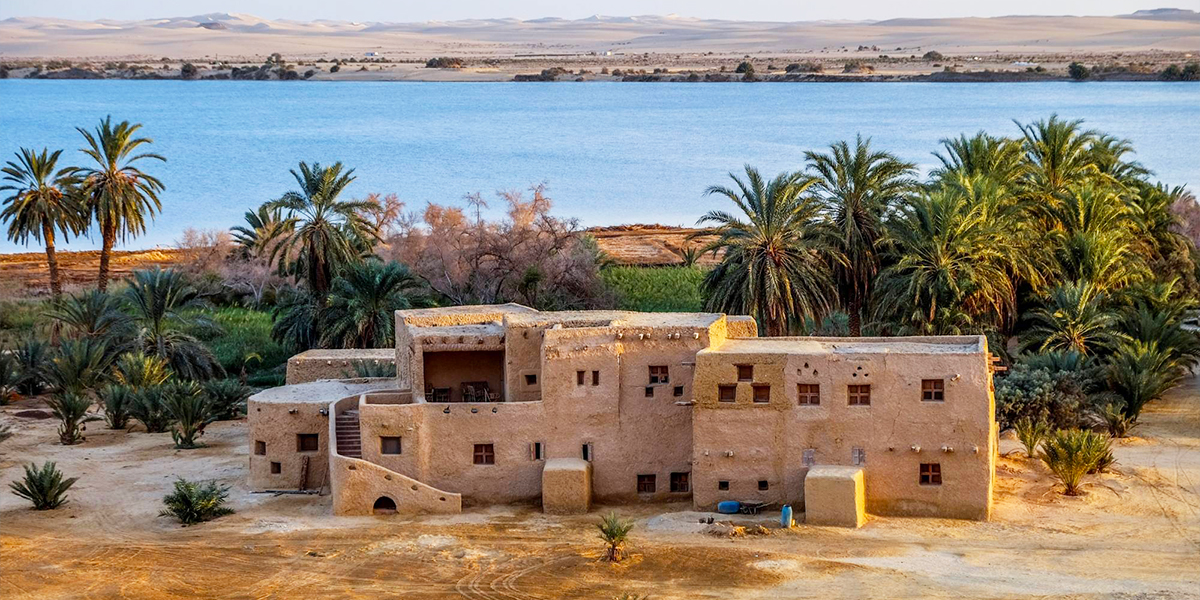
Conclusion
Siwa Oasis is where history, nature, and culture combine seamlessly into one captivating place. From exploring ancient ruins to floating in salt lakes, from thrilling desert safaris to stargazing under the vast night sky, the oasis offers several unique experiences. Whether you’re drawn to the region’s ancient past or its scenic landscapes, Siwa invites travelers to slow down, reconnect with nature, and explore the deeper rhythms of life.
With its warm-hearted people, spectacular natural beauty, and amazing history, Siwa Oasis stands out as one of Egypt’s most extraordinary destinations. Whether you’re planning a short visit or a longer stay, these activities will guarantee you leave with unforgettable memories of this remarkable desert haven.
